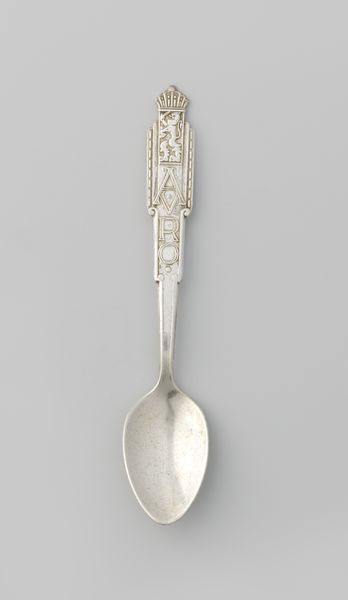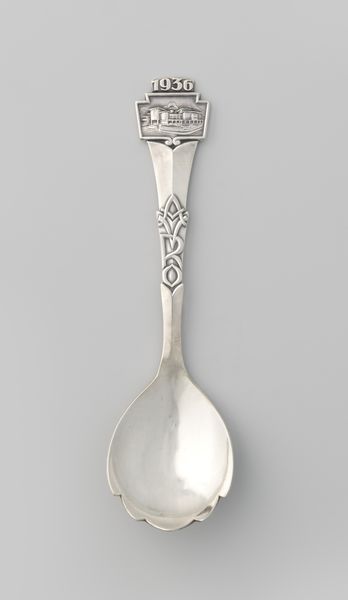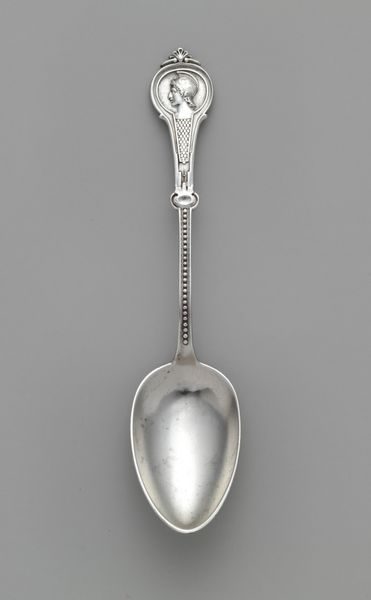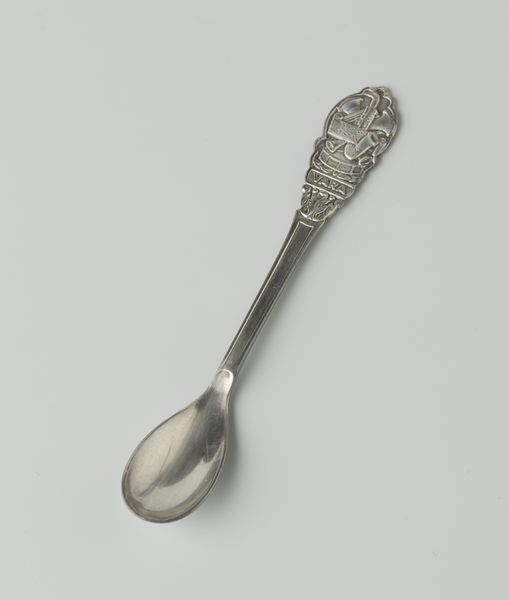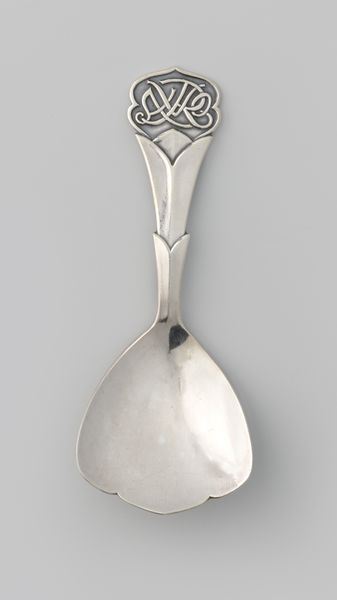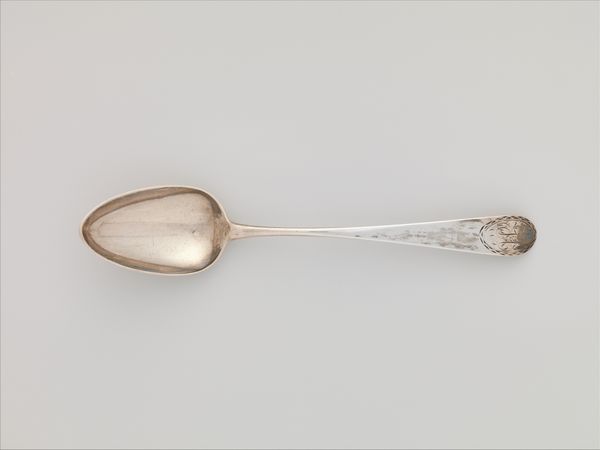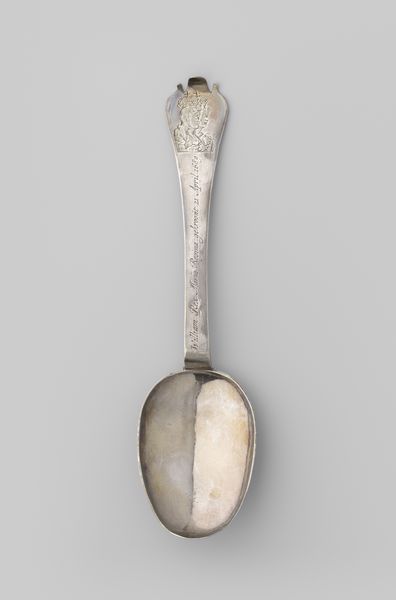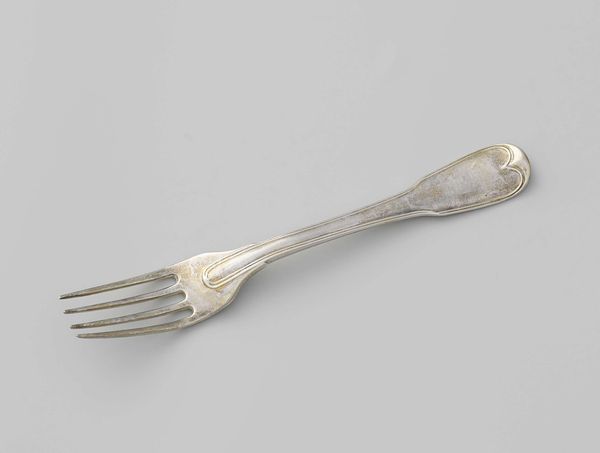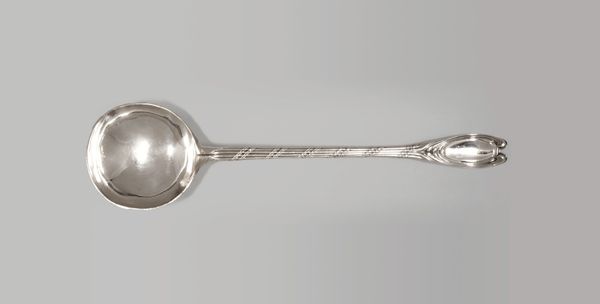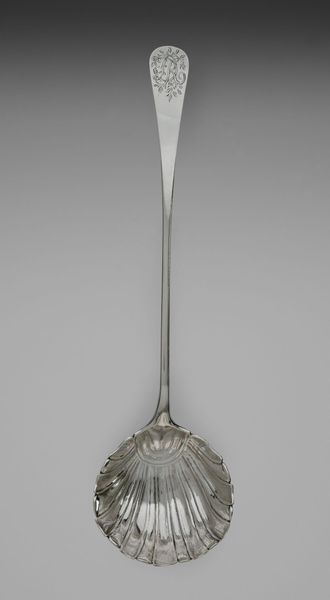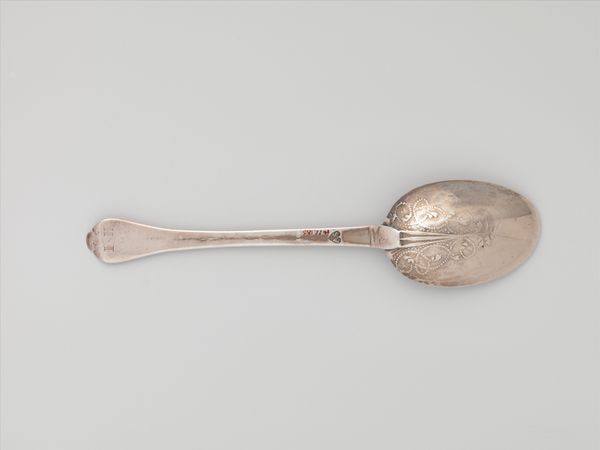
silver, metal
#
art-deco
#
silver
#
metal
#
decorative-art
Dimensions: length 15.1 cm, width 3.2 cm, depth 1.4 cm
Copyright: Rijks Museum: Open Domain
Curator: Here we have "Paplepel AVRO, zomer 1934," crafted sometime between 1934 and 1939 by Gero fabriek. It’s a fascinating example of decorative art in silver metalwork currently held here at the Rijksmuseum. Editor: My first impression is just how elegant the design is! It has such a streamlined shape. You can feel that art deco influence right away, a nod to the glamour of the era. Curator: Absolutely, its art deco features are unmistakable. Gero was quite active in the period, responding to the changing tastes and expanding market of broadcast consumers with radio. These shifts in culture reflected in objects we can all see and use in our homes Editor: And what strikes me, too, is the spoon's head with the lion figure that looks so nationalistic in this period of crisis and economic depression. AVRO being, of course, a big broadcasting network. Did that crest reinforce an idealized, maybe even nostalgic image of Dutch identity at that time? Curator: Precisely! The crest would absolutely connect it to this sense of Dutch identity, AVRO at the time was one of the biggest players in radio influencing public discourse on politics, culture and economics. To eat with something like this brings an elevated element to daily life, connecting one to the ideals being discussed throughout the country on the radio Editor: And in that, is there perhaps an implicit critique of commercialism creeping into cultural spaces? I’m wondering how an object like this engages with discussions around public versus private spheres in broadcasting itself. Curator: Well, you make an interesting point about the intersections between private enterprise and state symbols. But this was also a time when these two worlds weren’t as clearly separated as they are today. This was a burgeoning media landscape, still very much defining itself. Editor: That’s a vital reminder about looking back through a historic lens. Ultimately, pieces like this are beautiful records, prompting us to investigate deeper into societal narratives around identity and representation. Curator: Agreed, this is what is exciting about looking at objects like this today, they provide a glimpse into public conversations while helping understand some of the underlying ideologies.
Comments
No comments
Be the first to comment and join the conversation on the ultimate creative platform.
